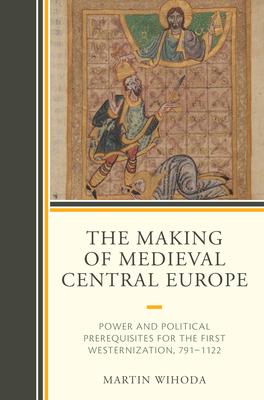Although the distant origins of medieval Central Europe have enjoyed constant interest among historians, only marginal attention has been paid to the power and political prerequisites for the first Westernization, i.e. the gradual adoption of the values, norms and patterns of behavior of the Latin West by the communities (gentes) around the eastern edge of the Carolingian and subsequently Holy Roman Empires. Such a gap in knowledge, long overlooked, is now being filled by The Making of Medieval Central Europe: Power and Political Prerequisites for the First Westernization, 791-1122. While respecting the state of research and based on an original analysis of the sources, this book offers an informed reflection of a complex dialogue that was initiated after the collapse of the Avar Khaganate at the end of the 8th century and that, by the beginning of the 12th century, gave rise to a Central Europe that was Westernized (i.e. turned toward the West) yet in many ways distinctive. Another and no less important added value of this book is the author's conscious effort to overcome the narrow interpretive matrices defined by the national interests of the time.

The Making of Medieval Central Europe: Power and Political Prerequisites for the First Westernization, 791-1122
Although the distant origins of medieval Central Europe have enjoyed constant interest among historians, only marginal attention has been paid to the power and political prerequisites for the first Westernization, i.e. the gradual adoption of the values, norms and patterns of behavior of the Latin West by the communities (gentes) around the eastern edge of the Carolingian and subsequently Holy Roman Empires. Such a gap in knowledge, long overlooked, is now being filled by The Making of Medieval Central Europe: Power and Political Prerequisites for the First Westernization, 791-1122. While respecting the state of research and based on an original analysis of the sources, this book offers an informed reflection of a complex dialogue that was initiated after the collapse of the Avar Khaganate at the end of the 8th century and that, by the beginning of the 12th century, gave rise to a Central Europe that was Westernized (i.e. turned toward the West) yet in many ways distinctive. Another and no less important added value of this book is the author's conscious effort to overcome the narrow interpretive matrices defined by the national interests of the time.